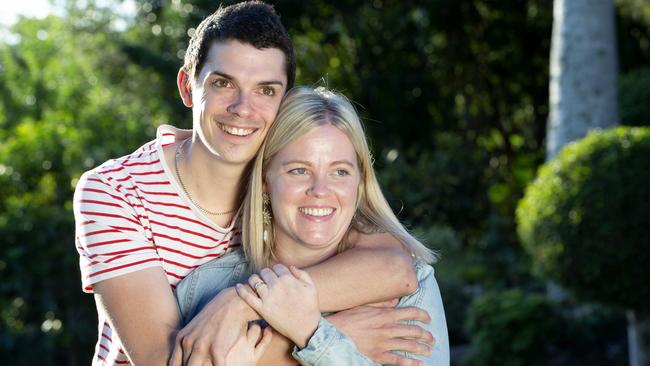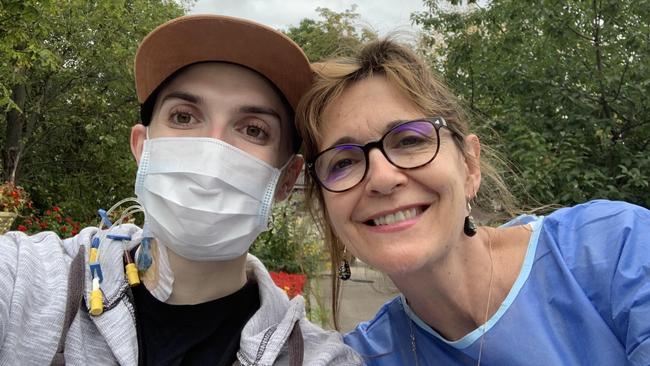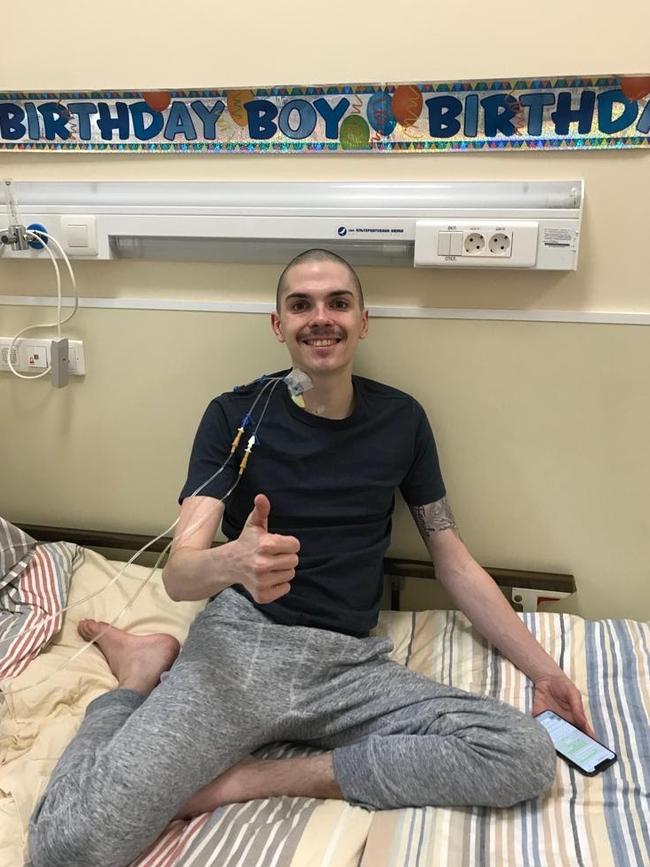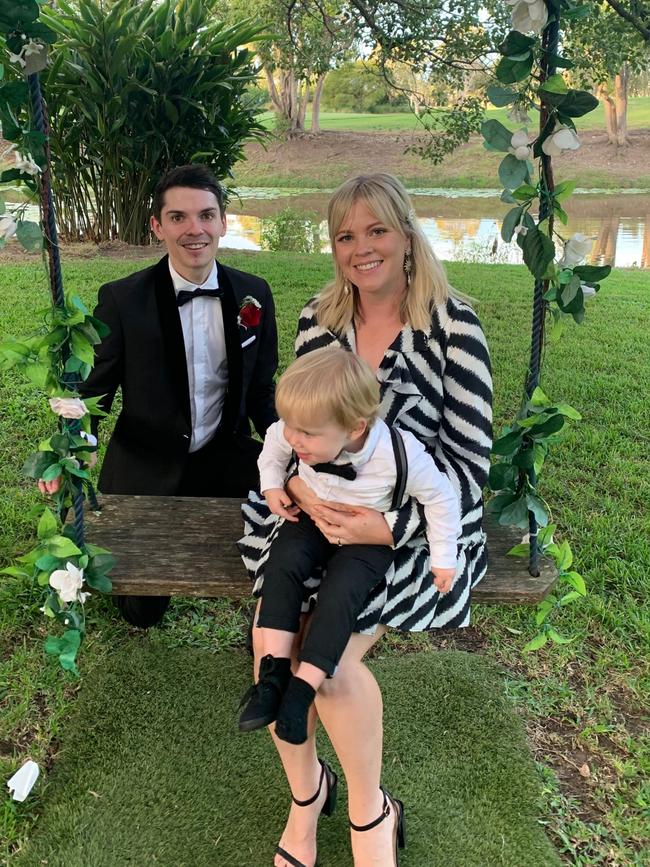$75,000 Russian stem cell transplant turns life around for Brisbane man with nerve disorder
A Brisbane man says a controversial, and expensive, transplant in Russia last year has saved him from the ravages of a rapidly progressing nerve disorder.

North
Don't miss out on the headlines from North. Followed categories will be added to My News.
Heading to Russia for a $75,000 medical treatment may have a saved a Brisbane man from losing the ability to walk and even more function in his arms.
Mark Hardingham, of Carseldine, was suffering the effects of chronic inflammatory demyelinating polyneuropathy (CIDP), a neurological disorder where the body attacks its own myelin (the outer casing of nerves).
Myelin acts like an insulator allowing nerves to conduct electrical impulses properly, and its degradation leads to progressive weakness and loss of feeling in the legs and arms.
The disease had progressed rapidly. What normally took five years took just five months in Mr Hardingham.
In that time he had been forced to stop work as a bottle shop manager and could no longer drive, leaving him in a “pretty dark place”.
In a desperate attempt to halt the disease he underwent HSCT (hematopoietic stem cell transplant) at the A.A Maximov Hospital in Moscow under Dr Denis Federenko.

The $75,000 treatment, which Mr Hardingham paid for himself, involved taking stem cells from his body, undergoing high dose chemotherapy to destroy his faulty immune system, and reinfusion of his stem cells.
That was followed by an eight-day period of isolation in hospital to minimise the risk of infection.
Now he says he is feeling better than ever and has started his own mobile coffee business.
“I’m the heaviest I’ve ever been. I’m eating well (healthy food) I’m putting on weight,” Mr Hardingham, 27, said.
“I ran for the first time 2.5 weeks ago. It was a pretty good feeling being able to run again.
“I was probably looking bit more like a duck. But I felt good doing it.
“I’m chasing and playing with Olly (his three-year-old son) every day. We run around the house terrorising Emma (his partner).”

Mr Hardingham’s clinical immunologist Dr Daman Langguth said his condition had definitely improved since the transplant, but urged caution.
Dr Langguth said he had a severe and rapidly progressing form of the disease which was causing limb pain, and making it hard to move his arms and legs.
As a result he might not have been able to walk within months and there was a 50 per cent of permanent impairment and 10 per cent chance of him being wheelchair-bound, he said.
“It appears that Mark has done well but the thing is some people with these diseases do get better on normal treatment as well,” he said.
“Just because he is better doesn’t prove what he had was needed.
“I think probably he’s done well but he may have done OK from other medications I may have given him.”
Two tests you must get to stop COVID-19
Dr Langguth said there was no reliable data from Russia on the effectiveness and safety of such treatment.
There was also the placebo effect to consider.
“When patients spend their own money on things there’s a big placebo effect,” he said.
“Anything associated with pain has a very huge placebo response.
“What’s going to be important is whether he gets long term benefit out of it.
“He could still have a relapse.”
While stem cell transplants were available in Australia for conditions such as severe scleroderma, they were not available for CIDP.
Treatment for scleroderma, and some others, was backed by the results of clinical trials.
But, Dr Langguth said there had been no clinical trial of stem cell transplantation for CIDP, partly because of the risk posed by the treatment, and other factors such as getting enough people for a trial, obtaining funding and the difficulty of measuring any benefits.
While he was not critical of Mr Hardingham’s decision to have the stem cell treatment, he said potential patients should be careful.

“What we need to say is ‘Could this be used to advertise to other people?’,” he said.
“Well, no.
“But should it be used to try to stimulate big neurology services to think about whether they should do a study?
“Well, I think that’s reasonable.”
His advice to those thinking of heading overseas for stem cell treatment?
“They should speak to their neurologist.”
Stem Cells Australia said the only proven treatments available in Australia involving stem cells were corneal and skin grafting, and blood stem cell transplants for the treatment of some blood, inherited immune and metabolic disorders, cancer and auto-immune diseases.
Commenting on so-called “stem cell tourism” and unproven treatments, Dr Kirstin Herbert from the Peter MacCallum Cancer Centre said they had not been run through clinical trials to test their safety and effectiveness.
Dr Herbert said patients were not given adequate follow-up, and if there were problems there was no accountability.
There was also the danger that stem cells, which theoretically can form any type of cell, had the capacity to form cancer cells or the wrong kind of tissue.
There were cases overseas of people developing cancers, or “odd” tissue forming, after stem cell treatment, she said.


